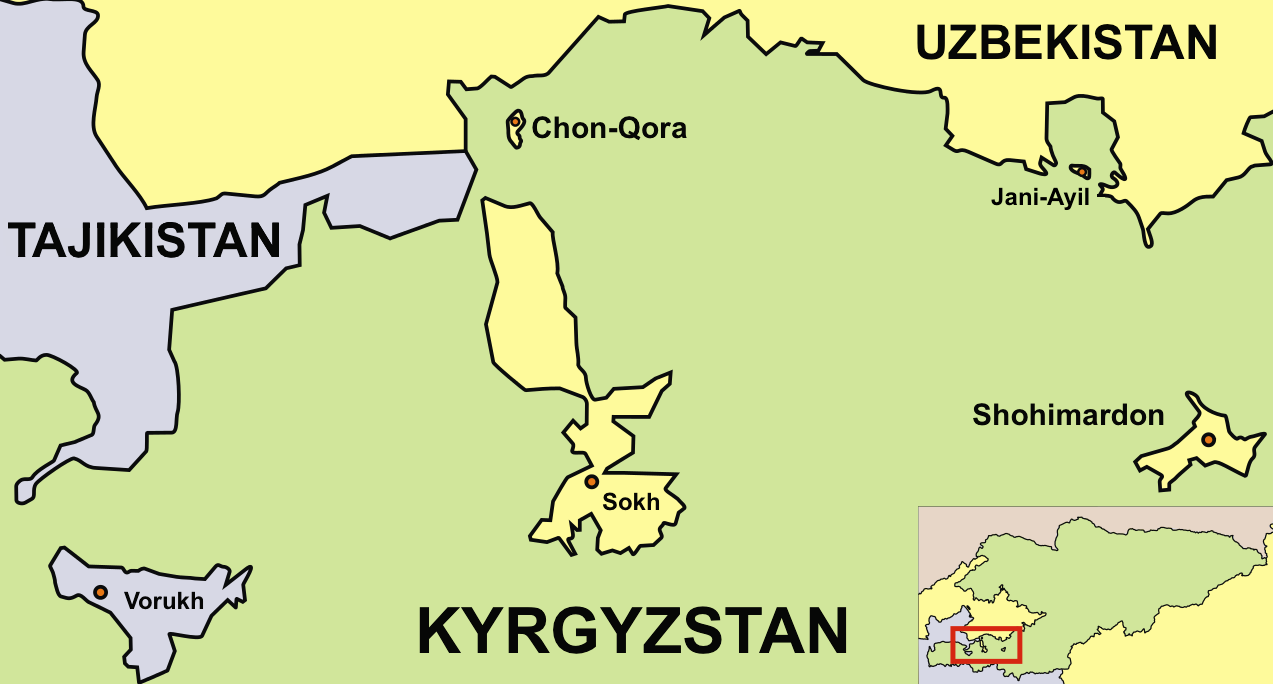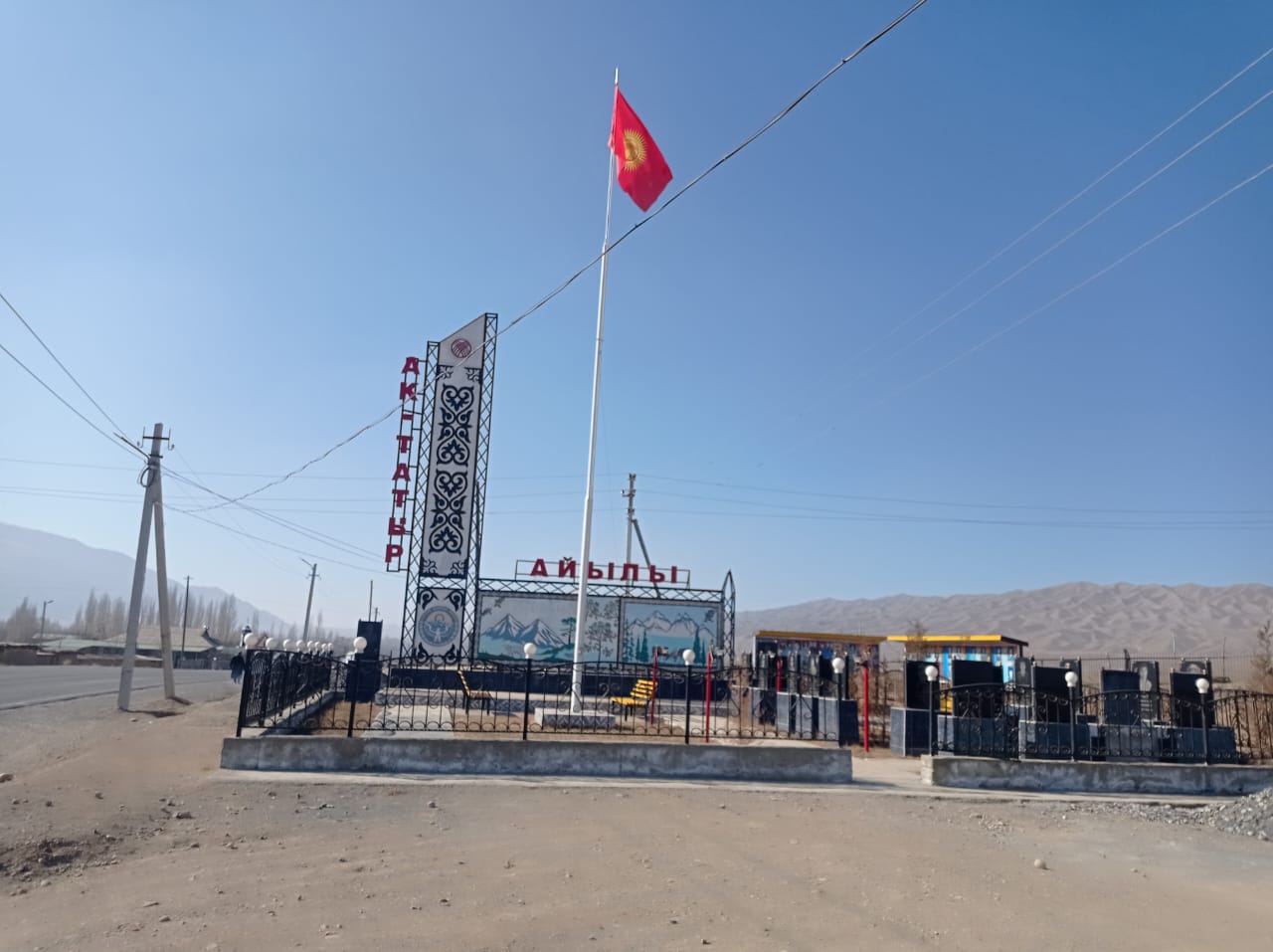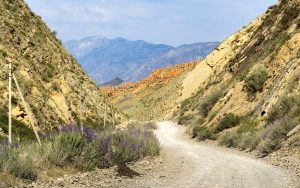On January 28, the president of Kyrgyzstan, Sadyr Japarov, took questions from reporters on the evolving negotiations delimiting the border between Kyrgyzstan and Tajikistan. As a problem that has plagued both countries since independence in 1991 – and was a bone of contention even before that – Japarov was keen to play down expectations that the process will be resolved rapidly.
“Bilateral work on the document is currently underway,” the president said. “After this is completed, the intergovernmental commissions will sign it, then the foreign ministers. After all these procedures, the agreement will be ratified by the parliaments of the two countries. Then we, the presidents of the two countries, will sign the document … And only then, for another 1-2 years, will demarcation work be carried out.”
Despite the long road ahead, both sides claim that a border has been substantially agreed, although they remain tight-lipped on the details. The Diplomat talked to locals and experts on both sides of the border in the Fergana Valley in order to try and gauge expectations ahead of a prospective agreement.
A History of Conflict
Frontier feuding in the Fergana Valley, Central Asia’s most fertile and populous region, goes back decades. “The central problem is the way the borders were established under Soviet rule,” says Muslimbek Buriev, a Tajik analyst based in Dushanbe. He accuses the Soviets of drawing these borders with a disregard for local settlement patterns. “This resulted in the emergence of multiple mutual enclaves of territories of Tajikistan, Kyrgyzstan, and Uzbekistan, with connecting roads becoming a key point of dispute,” he says. “Collective use of resources also became problematic as residents that used to access certain territories for their needs could not do that.”
A particularly thorny issue was that of pastureland. Whilst Tajik and Uzbek rural culture is traditionally more settled, Kyrgyz were historically nomadic, settling in the lowlands during the winter and the highlands in summer. That said, although there were disputes between villagers during the Soviet period, they didn’t tend to be as violent as today.
“The intensity of border conflicts grew exponentially after independence,” says Buriev. The absence of border checks and military personnel in the Soviet period have now been replaced by disputes that involve “soldiers, rocket launchers and drones.”
In September 2022, the most serious of these conflicts broke out, which led to the displacement of around 130,000 people on the Kyrgyz side of the border. The numbers of displaced Tajiks are unconfirmed. According to a Human Rights Watch report, the conflict also led to the deaths of 50 civilians, while 121 were injured.
Enclaves and Access
Two areas in particular are the most hotly-contested. The first is an area of Tajikistan called Vorukh, with a population of around 40,000. No one disputes that Vorukh is a part of Tajikistan; what is hotly debated is whether Vorukh is an enclave entirely surrounded by Kyrgyz territory (this is Kyrgyzstan’s position), or more like a geopolitical peninsula, connected to Tajikistan by a slither of territory, 20 kilometers long and approximately 200 meters wide at its thinnest point. Both sides cite their own maps from the Soviet period supporting their position; Tajikistan’s dates from the 1920s, while Kyrgyzstan’s comes from the late 1950s.
On the ground, the numbers are in Tajikistan’s favor. On either side of this corridor are around 100,000 Tajiks, living in the settlements of Vorukh, Surkh, and Chorku. The local Kyrgyz population is around a third of that.

The above map, shown from the Kyrgyz perspective, shows the enclave of Vorukh separated from Tajikistan proper. Tajikistan claims a 20-kilometer corridor connects the two. (Credit: Wikimedia Commons License)
Nonetheless, the bottleneck between Vorukh and Tajikistan is also a vital strategic corridor for Kyrgyzstan. Given the mountainous terrain to the south of Vorukh, the corridor claimed by Tajikistan is also the only functional link between the western part of Batken province and Kyrgyzstan proper.
Often, when a dispute arises, both sides immediately move to occupy this crossroads, cutting Vorukh off from Tajikistan and isolating the western part of Batken province from Kyrgyzstan. Given these high stakes, the most frequent conflicts occur here, particularly over access to water in the summer months. And despite the conciliatory noises coming out of Bishkek and Dushanbe, trust is in short supply amongst local villagers.
Doolotbek Bektimirov, who lives in Kyrgyzstan’s Ak-Tatyr village, a few hundred meters from the disputed corridor, believes that a fully demarcated border is the only way for himself and his family to feel safe. “I can’t fully trust Tajiks. I think they are ready to begin to conflict at any moment,” he says.
When the fighting began in 2022, he was forced to evacuate his wife and three children from the village. Nevertheless, he remains bullish about the need to defend his land. “We are not afraid of war. We don’t want it, but we are ready,” Bektimirov says.
Bektimirov tells The Diplomat of how the conflict has stopped investment in the local community. “We haven’t begun any major construction work since 2022. We haven’t even bought any more sheep, cows, or horses in order not to lose them during a possible conflict,” he says.

The village of Ak-Tatyr, near the disputed border. (Photo credit: Doolotbek Bektimirov)
Smuggler’s Paradise
The other disputed area is further west, near what was called the Kairakum Reservoir in Soviet times, although it was patriotically renamed the Tajik Sea in 2016. A couple of kilometers from here is Tajikistan’s second-largest city, Khujand. The disputed border runs less than a kilometer from the reservoir and no more than three kilometers from Khujand’s international airport.
Relations here have historically been less hostile than around Vorukh, with frequent cross-border trade. Khujand is one of the richest cities in Tajikistan, and was the base of the ruling elite during the Soviet period, when the city was called Leninabad. Meanwhile, the Kyrgyz side of the border is comparatively sparsely populated and isolated, over a thousand kilometers by road from Bishkek.
“Residents of the Batken district found it much cheaper and faster to access medical services and purchase goods in Khujand than to travel to Osh,” the nearest major city in Kyrgyzstan. says Khursand Khurramov, a Tajik political analyst. “Meanwhile, the population in Tajikistan’s border areas primarily purchased fuel, flour, and Chinese consumer goods from Kyrgyzstan.” He also notes that the lack of strict borders facilitated a booming trade in smuggled goods.
One of the most commonly smuggled goods is fuel. As a member of the Eurasian Economic Union, Kyrgyzstan generally receives fuel from Russia at far cheaper rates than Tajikistan. Local traders have long taken advantage of this. When one of the authors was stationed in Arka between 2015 and 2017, he noted a total of 32 petrol stations in the town, which has a population of just 4,391.
However, Adilet, a local from the neighboring village of Kulundu who asked that his name be changed to protect his identity, claims that these petrol stations are just a decoration: “In the past, Kyrgyz fuel trucks would stop at one of the gas stations in the bordering village and wait for a Tajik fuel truck. So, fuel will directly go from one truck to another.”
Organized crime also took advantage of the disputed status of the area in order to launder money. In addition to the petrol stations, by 2015, Arka was home to 20 casinos, where drug smugglers on both sides would come to wash their ill-gotten gains.
The flow of trade, both legal and illegal, did not necessarily lead to warm relations.
“In the past I used to go to Khujand for work, but we weren’t necessarily friends. Tajiks were just colleagues or business partners,” says Adilet.
However, he adds that since the border closure in 2022, trade has dropped significantly. “Somehow we found a way to substitute the products from Tajikistan,” he adds. “We used to buy things like bread, tomatoes or dairy products across the border. Now we have our own people who work on that, or we bring in food from Osh or Bishkek.”
Solutions
One thing that many believe has played a key role in the move toward an agreement is the increased state capacity of the Kyrgyz government. Since Sadyr Japarov came to power after being sprung from jail in 2020, Kyrgyz state budget revenues have almost tripled. From 152 billion Kyrgyz som in 2020, they are projected to hit 430 billion som in 2025 (equivalent to approximately $2.1 billion in 2020 and $5.26 billion in 2025, although exchange rates fluctuate).
Japarov has also tied much of his credibility to successful development in Batken Province. “Kyrgyzstan begins at Batken,” he declared in December 2023, after completing the construction of two new villages. “If Batken begins to develop, then the country as a whole will begin to develop.”
This has strengthened the faith of locals that they will be compensated well for their homes in the event of having to be resettled as part of an agreement.
“We have a strong and powerful government.” says Adilet. “The Tajiks have begun to respect our government after the conflicts when we weren’t afraid to use such weapons. First, they were acting disrespectfully. But our army wasn’t afraid and was ready for escalation.”
This suggests that a solution can be found in the case of the villages around Arka. However, a far stickier issue will be when the results of negotiations on the Vorukh corridor are made public. Both sides have been loathe to give way on this issue. Some suggest the territory might become neutral (although this presents its own difficulties), or that one side will accept the other’s control over the area on the understanding that there will be simplified passage for locals.
There is precedent for this. In 2021, Kyrgyzstan and Uzbekistan signed an agreement to allow for the free movement of goods and people through Kyrgyz territory to the Uzbek enclave of Sokh. Other examples include the rail corridor between Belarus and Kaliningrad, where Russian trains cross Lithuanian territory to access their Baltic exclave. Despite Russian-EU relations plunging to their worst point since the Cold War, this route remains open.
Such a solution might see one of the sides losing face, but compromise here could unlock far greater economic benefits.
“Dushanbe considers Bishkek as one of the key routes for overcoming its transportation isolation, which has been elevated to the level of a strategic priority for the Tajik government,” says Khurramov. “From this perspective, projects such as the Kyrgyzstan-Uzbekistan-China railway or the existing Kyrgyzstan-Tajikistan-Afghanistan-Iran transport corridor could play a significant role.” He adds that both sides also have significant interests in coordinating hydropower projects that could provide electricity to the wider region.
A huge carrot for Dushanbe is the potential for the opening of more border checkpoints between the two countries. The fastest direct route from China to the Tajik capital Dushanbe passes through Kyrgyzstan. Currently the border checkpoint at Karamik/Jirgatal is closed to foreigners, including Chinese trucks. Turning this into an international border would cut around 350 kilometers from the current route through the Pamir mountains.
Another independent Tajik analyst, Umed Khakimov, suggests that most importantly, resolving the border issue would permit the reallocation of resources toward international efforts to halt drug trafficking from Afghanistan.
“Drug trafficking remains Tajikistan’s biggest problem,” he asserts. “Improved relations with neighboring countries and joint efforts to protect borders can help reduce the activity of drug traffickers and strengthen security in the region. This is a concern for the entire world.”

































